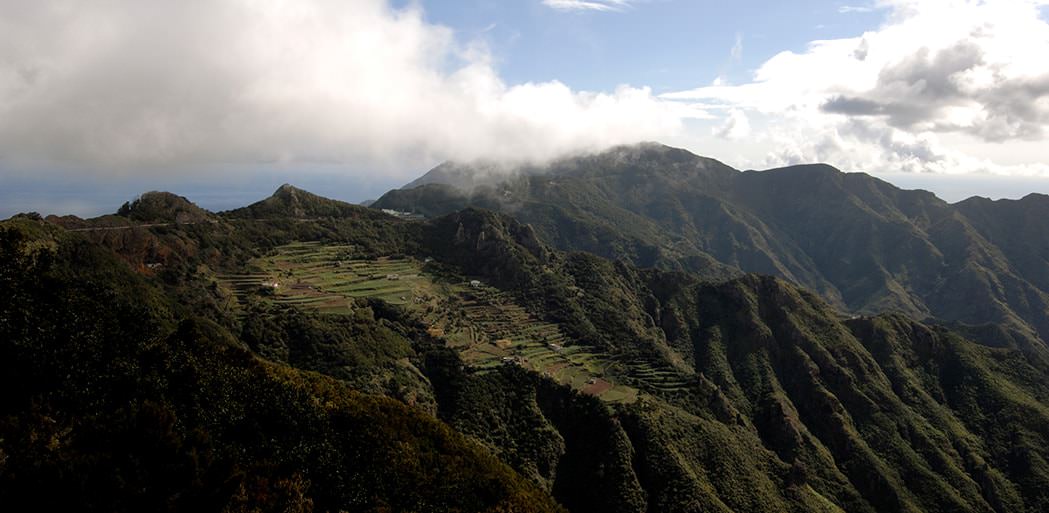Thanks to its location, Tenerife's weather and climate provides summer weather all the year round, with average daily maximums of 20°C degrees throughout the year, it is affectionately known as the land of eternal spring.
Tenerife's Location
Tenerife is the largest of seven volcanic islands that are known collectively as the Canaries or Canary Islands. These Spanish islands are located in the Atlantic Ocean, off the coast of Africa, 2399km from Morocco, and just north of the tropic of cancer (the same latitude as Orlando Florida). It's a 4-hour flight away from mainland Europe.
Several factors have their say on the islands many microclimates.
The Gulf Streams (Canary Current) and Trade Winds
The islands west of the archipelago tend to be influenced greater by the moist Gulf Stream, hence they're wetter and have greener vegetation (La Palma, El Hierro and La Gomera). In the summer months, the north-easterly breeze helps to keep the temperatures down in the high 20s, instead of the mid 30s, compared to other places on the same latitude, like Oman in the Middle East, Ghujurat in India or parts of Baja California.
Distance from Africa
The closer to Africa you get, the less influence the Gulf Stream has and the drier it gets. Fuerteventura and Lanzarote are the two islands closest to Africa and are the driest, with most of the island desert or semi-desert.
The Mountains
Rain-producing clouds from the Atlantic ocean, blown by the north easterly trade winds, travel up the steep northerly slopes of Tenerife from the sea, where they are forced to rise over the mountains and empty their load. Rainfall normally hits the northern slopes between 600m and 1800m above sea level, which explains why places like La Orotava and Tacorante are so green. This leaves the south-west. The likes of Los Cristianos and Torviscas (lying in the rain shadow) are protected by those mountains and dry and arid. It snows up Teide and the surrounding mountains in the winter months, and yet you can still sunbathe on the beaches.
Tenerife’s topography and diverse landscape was formed by volcanic eruptions and have evolved over time. This, along with the other factors mentioned above – the Gulf Stream, its distance from Africa and the mountains – all play a part in Tenerife's many microclimates (regional climatic variation). So much so, that you can choose the weather you want and then go after it. With excellent transport here, chasing after the sun has just got a lot easier.
Calima (hot winds)
It is rare, but when the wind comes from the Sahara, east or south-east, temperatures soar and the air and everything around it becomes thick with dust. Although it is not as badly affected as the more eastern Canarian islands, when the calima does come to Tenerife, it can get rather uncomfortable.
For a more comprehensive idea of Tenerife's weather for a certain month, please select the relevant links.


